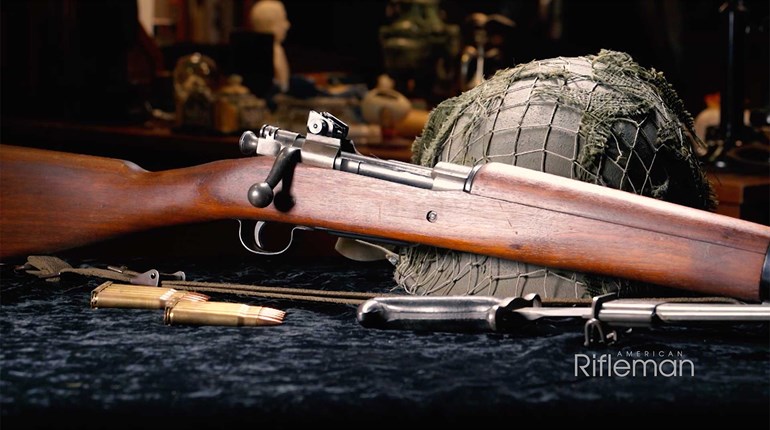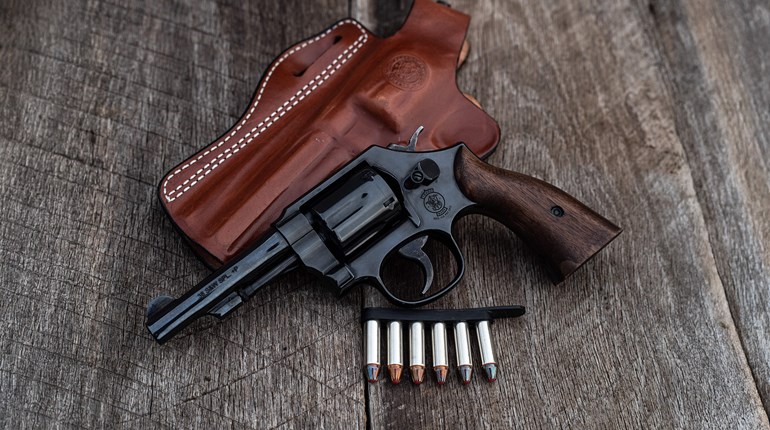
We are quick to recognize certain firearms designs as being particularly influential or inherently novel in the overall history of small-arms design. The Brown Bess, the 1898 Mauser and the M1 Garand come to mind. But then there are designs that, despite their importance within the landscape of small-arms history, have fallen outside of the mainstream. One such gun that has receded into relative obscurity is a handgun that armed the Italian military from 1891 through to the Second World War—the Bodeo revolver.
By the 1870s, just about every world power had adopted a revolver as a standard-issue sidearm. In Italy, the French-made Chamelot-Delvigne Model 1874 was serving, but was not entirely ideal. At 9.44 inches in overall length and weighing in at 2.38 pounds, it was a bit too big and heavy, so there was room for improvement. In 1886, gunsmith and engineer Carlo Bodeo patented a revolver based on the smaller and lighter Chamelot-Delvigne Police Model. Then, three years later, Bodeo was chairing a government commission tasked with adopting a replacement pistol. The design that the commission recommended for production combined elements of the Modello Glisenti 1889, which was also an improvement of the Chamelot-Delvigne, and Bodeo’s 1886 patent. The finished product was a six-shot, solid-frame, single-/double-action revolver chambered for the blackpowder 10.35x22 mm rimmed Ordinanza Italiana cartridge.

An innovative feature of the design was its use of the Abadie loading-gate system based on Jean Louis Warnant’s patent. This system made use of a gate that disconnected the revolver’s hammer when opened for loading. With the hammer disconnected, the operator simply used the trigger to advance the cylinder so each cartridge could be loaded. After firing all six rounds, the gun could be emptied by opening the loading gate and ejecting each piece of brass using the ejecting rod mounted beneath the barrel. Once again, the trigger would be used to advance the cylinder from one chamber to the next. It was a shorter and lighter design than the 1874 Chamelot-Delvigne.
This new pistol was given the official designation Pistola Rotazione Sistema Bodeo Modello 1889, but it was colloquially known simply as the Bodeo, and the Italians would ultimately adopt three versions of it. The most-widely produced version was the Tipo Truppa (“Enlisted Model”) with a 4.53-inch, hexagonal barrel, no trigger guard and a distinctive folding trigger that acted as a safety. Then there was the Tipo Ufficiali (“Officer’s Model”) with a round barrel of the same length and a trigger guard. Finally, there was the Tipo Alleggerito (“Lightweight Model”) with a shorter 3.46-inch barrel.

Multiple manufacturing interests in Italy and Spain produced the Bodeo through to the First World War, during which it served all branches of the Royal Italian military. Compared to the Chamelot-Delvigne, the Bodeo was smaller and lighter, but that didn’t stop the men who carried it from christening it coscia d’agnello— “the leg of lamb.” While that may not sound like a compliment, the Bodeo was known for being reliable (if not a little simplistic). In the aftermath of World War I, it remained in service despite the availability of more-modern pistols. During the interwar years, it served the military as well as constabulary forces like the Guardia Di Finanza and the Carabinieri. The success of the design was such that the Bodeo was put back into production briefly in 1930. The Second World War brought a final chapter to the gun’s impressive longevity. Despite the fact that an effective automatic pistol was available to the Italians after 1934, the Bodeo continued to serve in certain capacities. It remained popular with tank crews because it did not eject spent casings inside of a vehicle.
The Guardia Di Finanza continued using it as well as did the Carabinieri. During World War II, it served both before and after the Italian capitulation of September 1943, with examples fighting on with co-belligerent forces, Italian fascist forces and also the resistance groups that took up arms against German occupation. Even the Germans put the Bodeo to use under the designation “Revolver 680(i),” although its heyday had long since passed. If it had not been such a reliable old workhorse, the Bodeo would never have served so long as it did. But, it was the end of the line for a generation of blackpowder 19th century revolvers, and it may be the best example of that generation. Considering that and the fact its service stretched well into the 20th century, it deserves to be recognized as one of the more-important guns in the overall history of small-arms design.




































